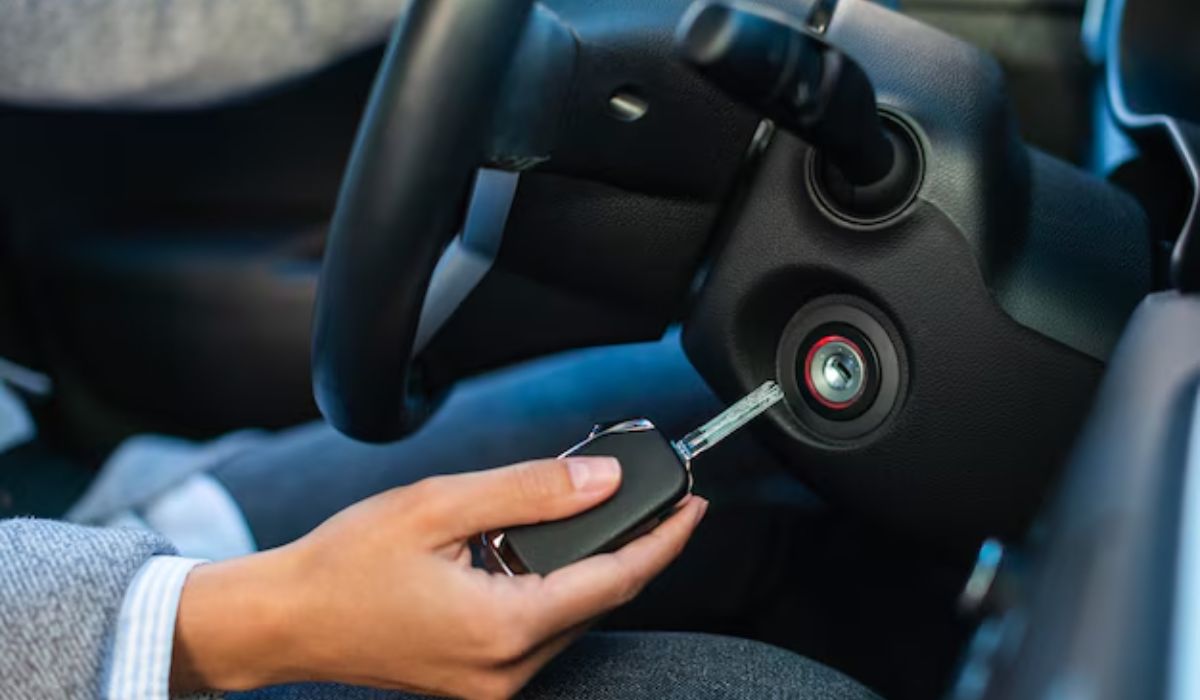Accidentally locking yourself—or worse, a child or pet—in a car is an unnerving experience. Extreme weather can make it even more dangerous, especially during hot summers and cold winters. According to the National Highway Traffic Safety Administration (NHTSA), over 800 children have died from heatstroke in cars in the U.S. since 1998, with 53% of cases involving kids left unattended in vehicles. This article provides essential tips to help you respond effectively in a car lock-in situation, whether it’s you or someone else needing assistance.
1. Assess the Situation Quickly
When a car lock-in occurs, time is of the essence, especially in extreme weather. Understanding the urgency based on the temperature, the age and health of those involved, and their emotional state can make a difference. Even if temperatures feel mild, a locked vehicle can heat up quickly, especially if it’s parked in the sun.
Important Stat: The inside of a car can reach 100°F in as little as 20 minutes on a 70°F day, according to the American Academy of Pediatrics (AAP). Understanding how quickly things can escalate should drive immediate action.
2. Seek Professional Help if Available
In non-life-threatening situations, professionals like locksmiths or roadside assistance services can unlock your vehicle. Many insurance companies offer emergency lockout assistance, which can be a convenient option if you’re locked out in a safe, comfortable environment.
- Roadside Assistance Services: Many car insurance policies offer roadside assistance, which can cover lockout services.
- Auto Locksmiths: Professional locksmiths have the tools and training to safely unlock most vehicles without damaging them. If you’re in need of a reliable service, KeyZoo Locksmith is a trusted option in the area. With their expertise and specialized equipment, they can quickly resolve lockout situations, ensuring minimal damage and maximum convenience.
3. Signal for Help
If a manual exit isn’t possible, the next step is to signal for help. Here are ways to make yourself or someone else more noticeable to passersby:
- Honk the Horn: Pressing the horn will create noise that could alert people nearby, prompting them to investigate.
- Phone Call: If you have a cellphone on you, call emergency services, a family member, or a friend to assist. If it’s a child locked in the car, calling 911 is advised.
- Use Hazard Lights: If the power in the car is active, activating the hazard lights can draw attention to your situation.
- Wave for Help: If you’re visible through the windows, use hand gestures to draw attention. Many people recognize these as signs of distress.
4. Check for Possible Exits
Once you realize you’re locked in, look for any possible ways out. Modern vehicles have emergency release features or manual overrides in case the automatic locking systems malfunction. Familiarize yourself with your car’s features, such as the emergency trunk release, which may be accessible from the back seat.
- Emergency Trunk Release: Many vehicles manufactured after 2001 come with an emergency release lever in the trunk. You can use this lever to open the trunk from the inside, potentially allowing escape from a rear seat or at least providing airflow.
- Manual Lock Override: Some vehicles have manual door locks or unlock buttons near the interior door handles. Knowing your car’s layout could allow you to disengage the locks even without the keys.
5. Stay Calm and Encourage Calmness in Others
Maintaining composure is essential, especially when children or pets are involved. Keeping calm can prevent panic, which may drain energy and increase anxiety.
If a child is locked inside, try to keep them calm by reassuring them through the glass or using a soothing tone. Speaking clearly and showing confidence can help reduce stress for everyone involved, making the situation easier to manage.
6. If Temperatures Are High, Take Immediate Action
During hot weather, car interiors can become dangerously warm in a short amount of time. According to the Centers for Disease Control and Prevention (CDC), when the outside temperature is 85°F, the car’s interior can hit 104°F within 10 minutes, a temperature dangerous for adults and lethal for children and pets.
- Break the Window if Necessary: If emergency help isn’t nearby, breaking the window is sometimes the only solution to quickly reduce heat. Aim for a window away from the individual locked inside and cover your hands with cloth or another object to minimize injury.
Note: Some laws allow bystanders to break a window if a child or pet is locked inside a car and in visible distress. Be aware of local laws and regulations, as they vary by region.
7. Know the Legal Protection in Place
In many areas, “Good Samaritan” laws protect individuals who intervene when someone is in immediate danger. These laws can protect you if you need to break a window to help a child or pet in distress. Check your state’s guidelines to understand your rights and responsibilities in such situations.
For example, Texas, Tennessee, and Georgia have specific laws that permit breaking a car window to save a life without legal consequences, provided it’s done with reasonable belief of imminent danger. If you’re a frequent driver, particularly in areas with high temperatures, knowing these laws can be reassuring if you ever find yourself in such a situation.
8. Prevent Future Lock-In Scenarios
Prevention is always better than reaction. Practicing safe habits and staying vigilant can help reduce the risk of car lock-ins:
- Keep Keys in Your Pocket: Make it a habit to always carry the car keys with you rather than placing them inside the car.
- Double-Check Before Leaving: Get in the habit of double-checking the backseat whenever you exit your car. Some newer vehicles even have reminder systems to alert drivers if someone is in the backseat.
- Use Child Safety Locks Wisely: Child locks can prevent accidental opening but remember to disengage them when they’re unnecessary to avoid accidental lock-ins.
9. Invest in Lockout Tools and Emergency Kits
Preparedness is essential for drivers, especially those with children or pets who may be prone to accidental lock-ins. Carrying emergency lockout tools can save time and stress.
- Emergency Lockout Kits: Available at many automotive stores, these kits typically include tools to safely unlock a vehicle. Just be sure to understand how to use them effectively.
- Break-Glass Tool: Compact break-glass tools can be an essential part of your car safety kit, especially if you frequently travel with pets or young children. Look for easy-to-use options that you can store near the driver’s seat.
Real-Time Weather Information and Heat Index Tools
In hot weather conditions, knowing the current temperature and heat index in your area can be invaluable. The National Weather Service (NWS) and similar sites provide real-time data on heat index levels, which can guide you on how fast a car’s interior may heat up. Bookmark reliable weather sources, like NOAA’s Heat Index Calculator, to stay prepared during heat waves.




